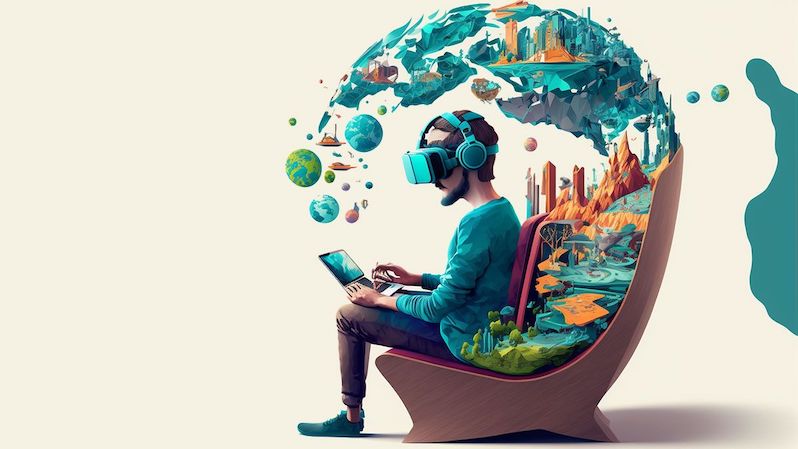How ChatGPT is Breaking Barriers for People with Disabilities

December 30, 2024. Imagine a world where technology adapts to you, not the other way around. For people with disabilities, that world is becoming a reality, thanks to groundbreaking tools like ChatGPT. This innovative AI is more than just a tech trend—it’s a lifeline for millions, offering new ways to connect, create, and thrive. In this article, we’ll explore some of the innovative ways people with disabilities are using ChatGPT.
What is ChatGPT?
ChatGPT, created by OpenAI, is an advanced artificial intelligence that can understand and generate human-like text. Think of it as a smart assistant that can help you write, learn, or solve problems, all through natural conversations. Its versatility is transforming accessibility, empowering people with disabilities to overcome challenges and embrace opportunities.
Accessible communication for all
Communication challenges may be a major hurdle for some individuals with disabilities. ChatGPT offers a versatile solution by serving as a real-time conversational partner. For people with speech impairments, ChatGPT can generate text responses that are easy to share in conversations. Individuals with hearing impairments can also benefit by using ChatGPT to transcribe or summarize spoken content, making it easier to stay engaged in meetings or social settings.
Moreover, the AI’s ability to understand context and provide nuanced responses ensures that users feel understood and supported. For non-native speakers or those with cognitive disabilities, ChatGPT can simplify complex language, breaking down information into more digestible formats. This fosters greater inclusivity and accessibility in both personal and professional settings.
Enhancing accessibility in education
Education is a cornerstone of empowerment, and ChatGPT is playing a pivotal role in making learning more accessible. Students with learning disabilities, such as dyslexia or ADHD, can use ChatGPT as a study companion, generating summaries, creating study guides, or explaining challenging concepts in simpler terms.
Additionally, individuals with physical disabilities that make traditional note-taking difficult can rely on ChatGPT to document, organize, and retrieve notes efficiently. This not only enhances productivity but also levels the playing field in academic environments. By tailoring its responses to individual needs, ChatGPT is enabling learners of all abilities to thrive.
Simplifying daily tasks and routines
For individuals with mobility challenges or visual impairments, daily tasks such as scheduling, grocery shopping, or drafting emails can be daunting. ChatGPT can assist by generating to-do lists, providing step-by-step guidance, or automating repetitive tasks. For example, someone with low vision can use ChatGPT to draft and proofread documents without needing extensive screen magnification tools.
ChatGPT’s integration with smart devices also opens the door to voice-activated assistance. Imagine asking ChatGPT to remind you of appointments, help with meal planning, or even troubleshoot technology issues—all through a few simple commands. By acting as a reliable virtual assistant, ChatGPT is helping users reclaim time and energy for what matters most.
Fostering creativity and self-expression
Creative expression is a powerful outlet for individuals with disabilities, and ChatGPT is fueling innovation in this space. Writers with physical disabilities can use ChatGPT to draft stories or brainstorm ideas without the need for extensive typing. Artists with vision impairments can leverage AI to generate written descriptions or inspirations for their work. For individuals who face challenges articulating their thoughts, ChatGPT can help craft emails, social media posts, or even poetry. By bridging gaps in expression, AI is enabling people to share their voices and talents with the world, fostering greater representation and understanding.
Promoting mental health and emotional well-being
Living with a disability can sometimes feel isolating, but ChatGPT provides a source of companionship and emotional support. While it’s not a replacement for professional therapy, ChatGPT’s empathetic and conversational tone can help users process emotions, practice mindfulness, or simply vent about their day. (Related: 7 ways to improve mental health and get a grip on stress)
For individuals with anxiety or autism, ChatGPT can also simulate social interactions, helping them build confidence in communication. Its 24/7 availability ensures that support is always just a message away, promoting a sense of connection and well-being.
Looking ahead: the future of AI and accessibility
As ChatGPT continues to evolve, its potential for accessibility is only growing. Future developments may include more robust integrations with assistive technologies, such as screen readers, Braille displays, and eye-tracking devices. Additionally, collaboration with accessibility experts and individuals with disabilities will ensure that AI tools remain inclusive and effective.

